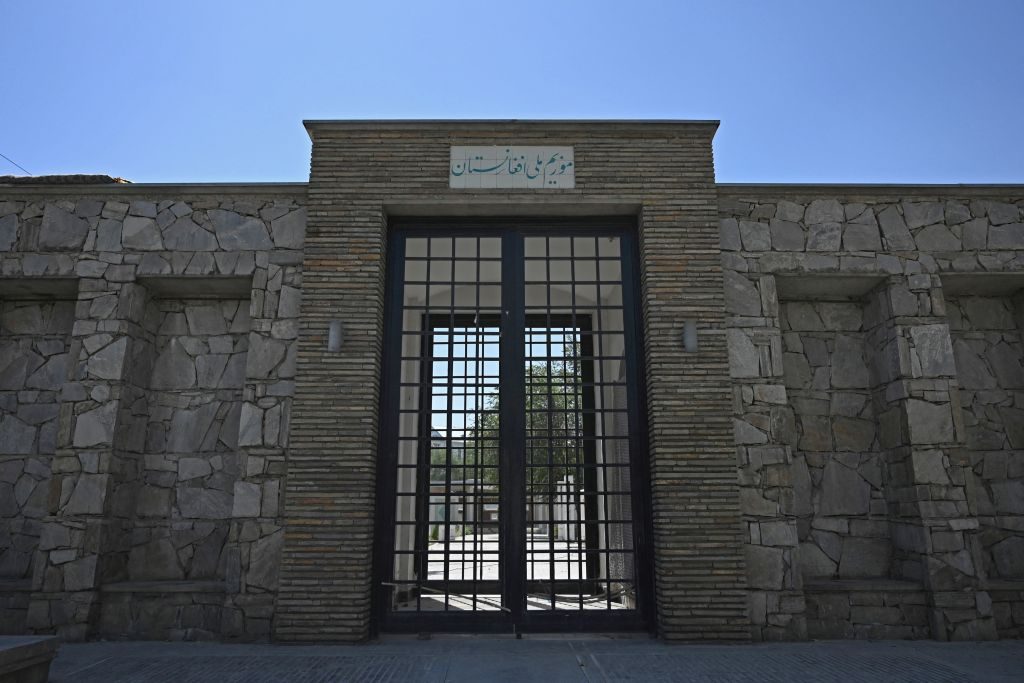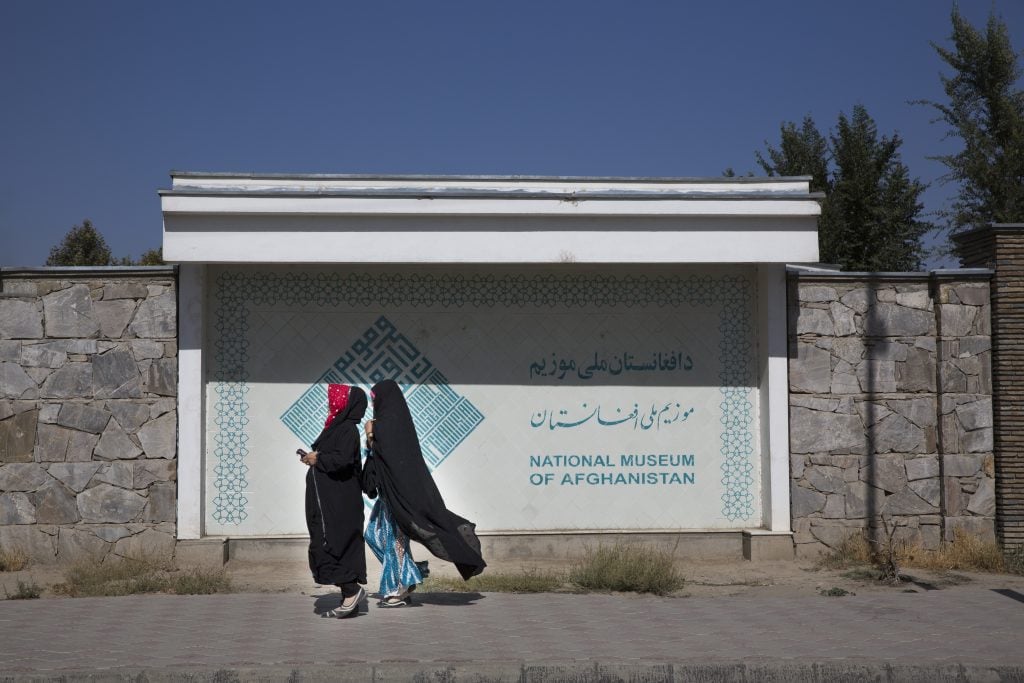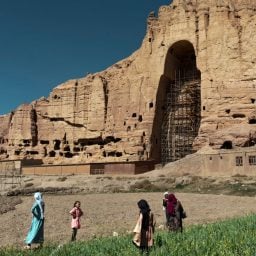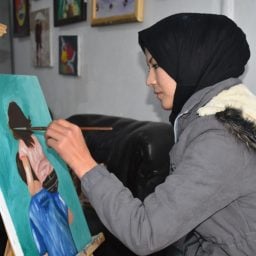Twenty years ago, the Taliban destroyed two 6th-century statues—the historic Buddhas of Bamiyan—in a systematic effort to rid Afghanistan of any vestige of non-Islamic cultural heritage. Now, as the militant group retakes control of the country, artists and cultural leaders fear that their work may be in jeopardy once again.
Reports from local and international news outlets indicate that Afghan artists are hiding their own creations—or, in extreme instances, even destroying them—for fear that they might be raided by Taliban enforcers. Others, meanwhile, have fled the country or gone into hiding themselves.
One prominent artist told the Washington Post that he buried 15 of his paintings—all portraying women in a modernist style—days after the group assumed control of Kabul, and fled with dozens of other artworks to a relative’s house, where he is holed up in secrecy.
“When we paint a human being or an animal, the Taliban says we give life and spirit to a piece of paper,” said the artist, who spoke on the condition of anonymity. “Saving my own art is like saving my own life.”
Contemporary Afghan artist, activist, and curator Mina recounted a similar story to the Art Newspaper. Fearing a door-to-door search from militants, she stashed all her artwork, tore pages out of books, and deleted her social media accounts.
“Every day I receive messages from other artists asking: ‘What should we do? What advice do you have? We are in danger,’” the artist said. “I don’t have any answers for them and that’s extremely painful for me.”
“Who is thinking of art now?” Mina asked. “No one. Everyone is only thinking of finding ways to save their lives.”

The main entrance of the closed National Museum of Afghanistan in Kabul on September 8, 2021. Photo: Aamir Qureshi/AFP via Getty Images.
Since the Taliban’s return to power last month, the mullahs have not yet issued any formal declarations about the rules regarding art. The group’s deputy spokesperson, Bilal Karimi, told the Post that the interim government is in the process of establishing a “framework,” but explained that whether or not a given piece of art is “permissible or prohibited” will be determined by Islamic law.
“The knowledgeable people will formulate the rules, keeping in view the religious, national, and historical traditions for art and cultural heritage, and whether these issues are in line with the Islamic laws or against them,” Karimi said to the paper.
Few artists have reported direct interference from Taliban members so far, and the country’s major institutions, such as the National Museum of Afghanistan, have not been raided. But many, especially those who lived through the group’s rule between 1996 and 2001, remain wary.
Activist Omaid Sharifi and the collective he founded in 2014, ArtLords, have spent years decorating the otherwise oppressive concrete blast walls in Kabul with colorful murals. But within weeks of the Islamists’ seizure of the capital, many of the collective’s creations have been painted over and replaced with Taliban propaganda.
Sharifi invoked a funereal shroud: “The image that comes to my mind is [the Taliban] putting a kaffan over the city,” he told the AFP this month.










